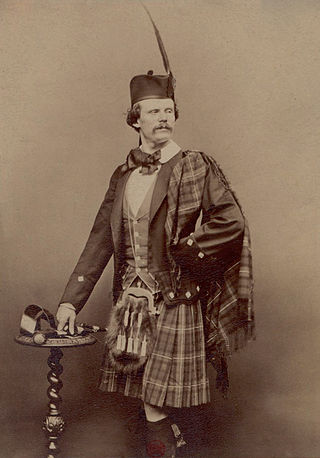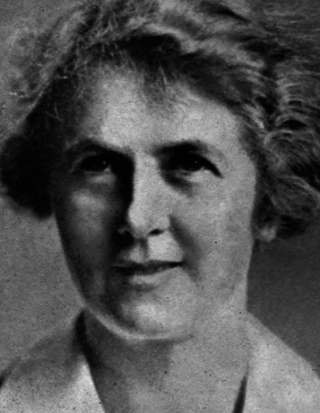Related Research Articles

Frederic William Henry Myers was a British poet, classicist, philologist, and a founder of the Society for Psychical Research. Myers' work on psychical research and his ideas about a "subliminal self" were influential in his time, but have not been accepted by the scientific community.

Spiritualism is a social religious movement popular in the nineteenth and early twentieth centuries, according to which an individual's awareness persists after death and may be contacted by the living. The afterlife, or the "spirit world", is seen by spiritualists not as a static place, but as one in which spirits continue to interact and evolve. These two beliefs—that contact with spirits is possible, and that spirits are more advanced than humans—lead spiritualists to the belief that spirits are capable of advising the living on moral and ethical issues and the nature of God. Some spiritualists follow "spirit guides"—specific spirits relied upon for spiritual direction.

A séance or seance is an attempt to communicate with spirits. The word séance comes from the French word for "session", from the Old French seoir, "to sit". In French, the word's meaning is quite general and mundane: one may, for example, speak of "une séance de cinéma". In English, however, the word came to be used specifically for a meeting of people who are gathered to receive messages from ghosts or to listen to a spirit medium discourse with or relay messages from spirits. In modern English usage, participants need not be seated while engaged in a séance.

Levitation or transvection, in the paranormal or religious context, is the claimed ability to raise a human body or other object into the air by mystical means.

Daniel Dunglas Home was a Scottish physical medium with the reported ability to levitate to a variety of heights, speak with the dead, and to produce rapping and knocks in houses at will. His biographer Peter Lamont opines that he was one of the most famous men of his era. Harry Houdini described him as "one of the most conspicuous and lauded of his type and generation" and "the forerunner of the mediums whose forte is fleecing by presuming on the credulity of the public." Home conducted hundreds of séances, which were attended by many eminent Victorians. There have been eyewitness accounts by séance sitters describing conjuring methods and fraud that Home may have employed.

Mediumship is the practice of purportedly mediating communication between familiar spirits or spirits of the dead and living human beings. Practitioners are known as "mediums" or "spirit mediums". There are different types of mediumship or spirit channelling, including séance tables, trance, and ouija. The practice is associated with spiritualism and spiritism. A similar New Age practice is known as channeling.

Eusapia Palladino was an Italian Spiritualist physical medium. She claimed extraordinary powers such as the ability to levitate tables, communicate with the dead through her spirit guide John King, and to produce other supernatural phenomena.

Brian St John Inglis was an Irish journalist, historian and television presenter who worked in London. He was born in Dublin, Ireland, and retained an interest in Irish history and politics. He was best known to people in Britain as the presenter of All Our Yesterdays, a television review of events exactly 25 years previously, as seen in newsreels, newspaper articles, etc. He also presented the weekly review of newspapers known as What the Papers Say.

Mina 'Margery' Crandon was an American psychic medium who performed under the stage name 'Margery' and claimed to channel her dead brother, Walter Stinson. Investigators who studied Crandon concluded that she had no such paranormal ability, and others detected her in outright deception. She became known as her alleged paranormal skills were touted by Sherlock Holmes author Sir Arthur Conan Doyle and were disproved by magician Harry Houdini. Crandon was investigated by members of the American Society for Psychical Research and employees of the Scientific American.

In spiritualism, ectoplasm, also known as simply ecto, is a substance or spiritual energy "exteriorized" by physical mediums. It was coined in 1894 by psychical researcher Charles Richet. Although the term is widespread in popular culture, there is no scientific evidence that ectoplasm exists and many purported examples were exposed as hoaxes fashioned from cheesecloth, gauze or other natural substances.
The American Society for Psychical Research (ASPR) is the oldest psychical research organization in the United States dedicated to parapsychology. It maintains offices and a library, in New York City, which are open to both members and the general public. The society has an open membership, anyone with an interest in psychical research is invited to join. It maintains a website; and publishes the quarterly Journal of the American Society for Psychical Research.

Eva Carrière, also known as Eva C, was a fraudulent materialization medium in the early 20th century known for making fake ectoplasm from chewed paper and cut-out faces from magazines and newspapers.

Leonora Piper was a famous American trance medium in the area of Spiritualism. Piper was the subject of intense interest and investigation by American and British psychic research associations during the early 20th century, most notably William James and the Society for Psychical Research.

Hereward Carrington was an American investigator of psychic phenomena and author. His subjects included several of the most high-profile cases of apparent psychic ability of his times, and he wrote over 100 books on subjects including the paranormal and psychical research, conjuring and stage magic, and alternative medicine. Carrington promoted fruitarianism and held pseudoscientific views about dieting.

Gladys Osborne Leonard was a British trance medium, renowned for her work with the Society for Psychical Research. Although psychical researchers such as Oliver Lodge were convinced she had communicated with spirits, skeptical researchers were convinced that Leonard's trance control was a case of dissociative identity disorder.

Trevor Henry Hall (1910–1991) was a British author, surveyor, and sceptic of paranormal phenomena. Hall made controversial claims regarding early members of the Society for Psychical Research. His books caused a heated controversy within the parapsychology community.

George Valiantine (1874–1947) was an American direct voice medium who was exposed as a fraud.

Kathleen Goligher was an Irish spiritualist medium. Goligher was endorsed by engineer William Jackson Crawford who wrote three books about her. She was exposed as a fraud by physicist Edmund Edward Fournier d'Albe in 1921.
Alan Gauld is a British parapsychologist, psychologist and spiritualist writer best known for his research on the history of hypnotism and mediumship.
Archibald Campbell Holms (1861–1954) most well known as A. Campbell Holms was a Scottish shipbuilding expert and spiritualist.
References
- ↑ "Ruth Brandon, Author" (PDF). Retrieved 25 December 2024.
- ↑ Biography for Ruth Brandon
- ↑ An Interview with Ruth Brandon by Louis E. Bourgeois
- ↑ Marlene Tromp. Altered States: Sex, Nation, Drugs, And Self-transformation in Victorian Spiritualism . State University of New York Press. p. 7. ISBN 978-0791467398
- ↑ Martin Gardner. (1988). The New Age: Notes of a Fringe Watcher. Prometheus Books. p. 175. ISBN 978-0879754327
- ↑ Ruth Brandon. Scientists and the Supernormal. New Scientist 16 June 1983
- ↑ Brian Inglis. Supernormal. New Scientist. 30 June 1983
- ↑ Ruth Brandon. Prestidigitations. New Scientist. 14 July 1983
- ↑ Ruth Brandon at Harper Collins Publishers
- ↑ Ruth Brandon at Grove Atlantic
- ↑ Ruth Brandon (2008): Other people's daughters. The Life and Times of the Governess. Weidenfeld & Nicolson.
- ↑ Brandon, Ruth (1984). The Spiritualists: The Passion for the Occult in the Nineteenth and Twentieth Centuries. Prometheus Books. ISBN 9780879752699.